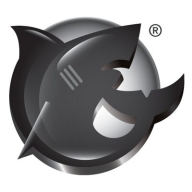

Hitachi Virtual Storage Platform and FreeNAS are competitors in the storage solution category. Hitachi VSP holds the upper hand due to its reliability, scalability, and data availability, despite being more costly.
Features: Hitachi VSP offers non-disruptive migration, Global Active Device enabling site-to-site volume access, and advanced flash capabilities. FreeNAS is highlighted for ease of use, strong Windows and Linux integration, and efficient disk management.
Room for Improvement: Hitachi VSP could simplify its management interface and setup process, and enhance automation and support. FreeNAS could improve clustering capabilities and provide more cohesive documentation to boost scalability and integration.
Ease of Deployment and Customer Service: Hitachi VSP, while supporting hybrid environments, can be complex to set up and often requires professional assistance. FreeNAS is simple to deploy but needs enhanced documentation and broader regional support.
Pricing and ROI: Hitachi VSP is costlier with complex licenses but offers considerable ROI through performance and reliability. FreeNAS, as an open-source platform, minimizes costs besides hardware, appealing to budget-conscious users with its free licensing.
| Product | Market Share (%) |
|---|---|
| Hitachi Virtual Storage Platform | 5.8% |
| FreeNAS | 2.0% |
| Other | 92.2% |


| Company Size | Count |
|---|---|
| Small Business | 7 |
| Large Enterprise | 2 |
| Company Size | Count |
|---|---|
| Small Business | 19 |
| Midsize Enterprise | 14 |
| Large Enterprise | 28 |
RETHINK YOUR DEFINITION OF SPEED AND PERFORMANCE
With adaptive, guaranteed data reduction and a 100% data-availability guarantee, Hitachi Virtual Storage Platform F series helps you tackle complicated business challenges. Hitachi Data Systems (HDS) VSP F series delivers up to 4.8M IOPS with sub-millisecond response times.
Featuring legendary Hitachi reliability, VSP F series arrays are backed by the industries only 100% availability guarantee. For these reasons, 80% of the Fortune 500 choose Hitachi all-flash arrays to accelerate the performance of mission-critical applications like Oracle, SAP, Virtualization, Microsoft apps etc. With over 350 patents in flash technology, Hitachi’s innovative mix of flash hardware and software accelerates ROI with enterprise-class reliability and performance.
We monitor all NAS reviews to prevent fraudulent reviews and keep review quality high. We do not post reviews by company employees or direct competitors. We validate each review for authenticity via cross-reference with LinkedIn, and personal follow-up with the reviewer when necessary.